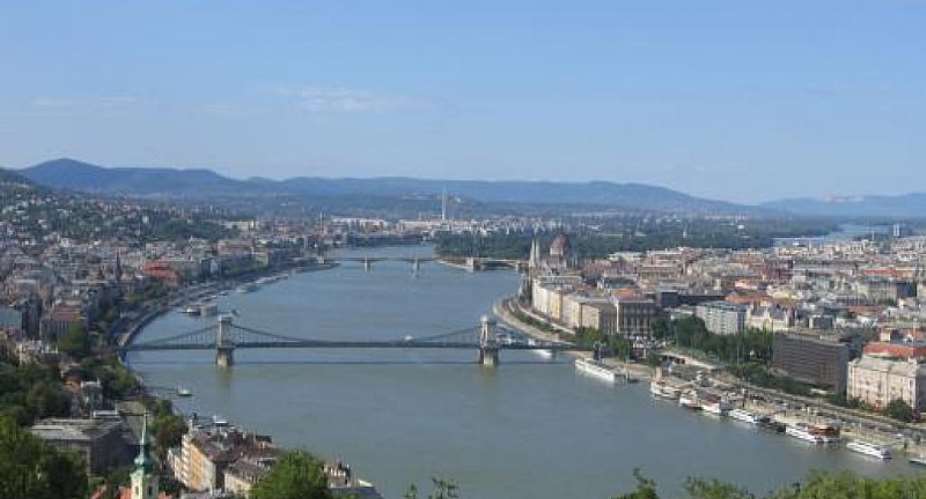A major global study has found that hundreds of rivers around the world are contaminated with dangerous levels of antibiotics.
While rivers in Africa and Asia were the worst off, unsafe levels of antibiotics were also found in European river systems, such as the Danube in Austria, and the Thames in the UK.
“We've known that antibiotics were present in our rivers for some time, but our study is the first to quantify them on a global scale,” says Alistair Boxall, a scientist with the York Environmental Sustainability Institute, who co-led the research.
“We've found that rivers – particularly in Africa and Asia – have antibiotics that will probably select for resistance and could be contributing to the antimicrobial crisis.”
Drugs present in two-thirds of sites tested
Researchers were specifically looking for 14 types of antibiotics used to treat infections in humans. The study found that antibiotics were present in 65 percent of the 711 sites tested in 72 countries. Of those, 111 contained dangerous concentrations of antibiotics.
The worst offender was a site in Bangladesh, where the antibiotic metronidazole – which is used to treat vaginal infections – exceeded more than 300 times the safe level.
Eight percent of sites tested in Europe exceeded safe limits including the Danube, the most polluted on the continent, and the Thames, where unsafe levels of five antibiotics – including ciprofloxacin, which treats urinary tract and skin infections – were found.
The presence of antibiotics in our natural environment has been linked to the rise in drug-resistant bacteria, which the United Nations warns is a global health emergency that stands to kill 10 million people by 2050.
Professor William Gaze, a microbial ecologist at the University of Exeter, says antibiotic-resistant bacteria in humans originated from bacteria in the environment.
“In human pathogens that are resistant to antibiotics, we know the genes that confer resistance have been transferred from environmental bacteria where resistance has evolved over evolutionary time – because most of our drugs are natural products that have come from environmental microorganisms,” Gaze says.
A global challenge
The team behind the global river study – being presented Monday at the Society of Environmental Toxicology and Chemistry in Helsinki – say the results prove that antibiotic contamination is a global problem.
So how are the antibiotics getting there in the first place? Boxall says the most contaminated sites tend to be close to wastewater treatment works, where sewage gets treated and goes out into rivers, or near dumping grounds and landfill sites.
“In some of the African rivers in particular, we're finding there's illegal dumping of sewage and waste,” he adds. “In Kenya, for example, some of the sites we looked at had massive amounts of domestic rubbish, and our suspicion is that pharmaceuticals are hidden in that rubbish and migrating into the river.”
Solving the problem of antibiotic pollution in the natural environment is going to be a massive challenge, Boxall warns. “And it needs to start with improved sanitation.”





 Tuesday’s downpour destroys ceiling of Circuit Court '8' in Accra
Tuesday’s downpour destroys ceiling of Circuit Court '8' in Accra
 SOEs shouldn't compromise on ethical standards, accountability – Akufo-Addo
SOEs shouldn't compromise on ethical standards, accountability – Akufo-Addo
 Father of 2-year-old boy attacked by dog appeals for financial support
Father of 2-year-old boy attacked by dog appeals for financial support
 Jubilee House National Security Operative allegedly swindles businessman over sa...
Jubilee House National Security Operative allegedly swindles businessman over sa...
 Nobody can order dumsor timetable except Energy Minister – Osafo-Maafo
Nobody can order dumsor timetable except Energy Minister – Osafo-Maafo
 Mahama wishes National Chief Imam as he clock 105 years today
Mahama wishes National Chief Imam as he clock 105 years today
 J.B.Danquah Adu’s murder trial: Case adjourned to April 29
J.B.Danquah Adu’s murder trial: Case adjourned to April 29
 High Court issues arrest warrant for former MASLOC Boss
High Court issues arrest warrant for former MASLOC Boss
 Align academic curriculum with industry needs — Stanbic Bank Ghana CEO advocates
Align academic curriculum with industry needs — Stanbic Bank Ghana CEO advocates
 Election 2024: We'll declare the results and let Ghanaians know we've won - Manh...
Election 2024: We'll declare the results and let Ghanaians know we've won - Manh...
